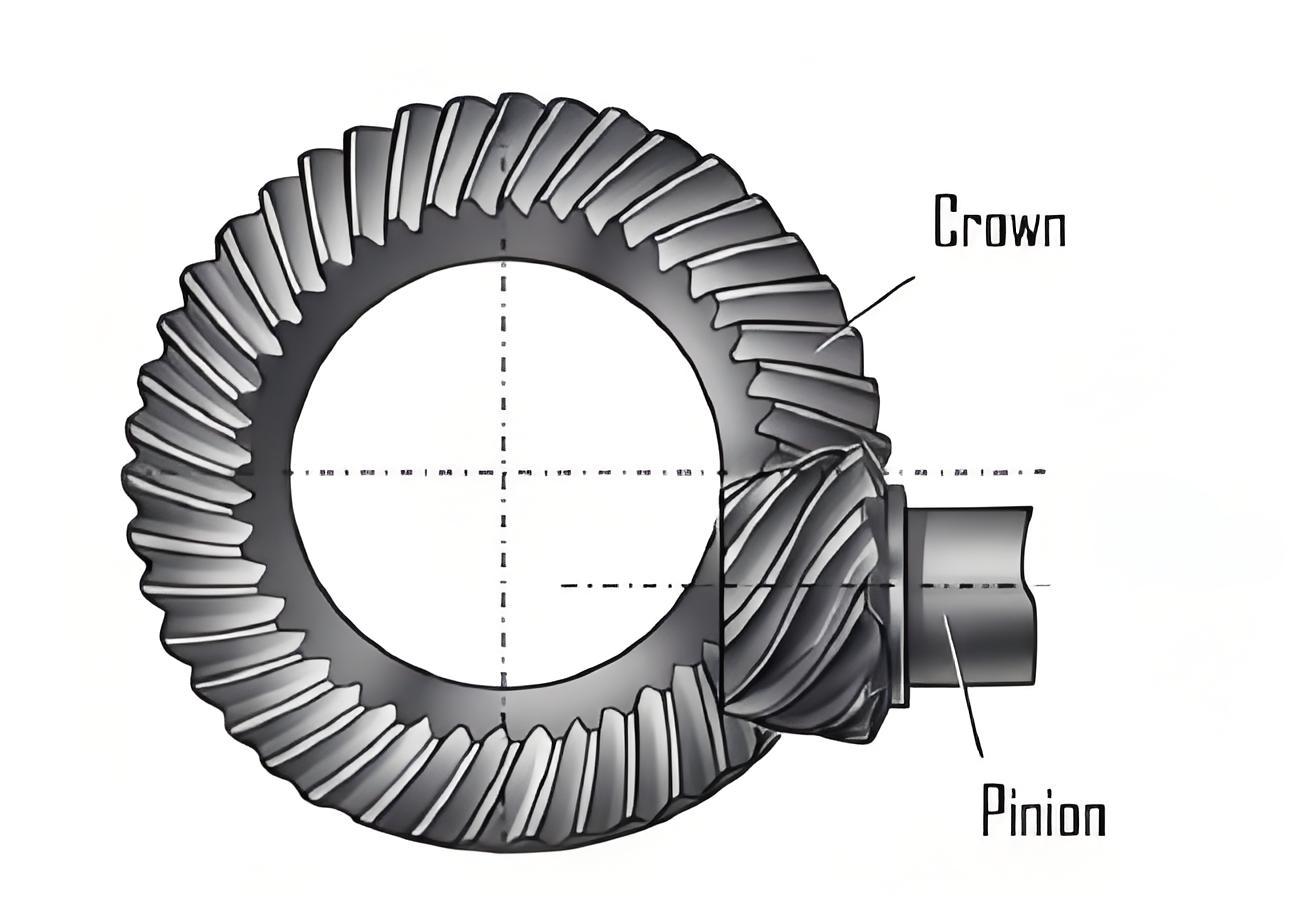Hypoid gear transmission, characterized by high coincidence degree, strong bearing capacity, and low transmission noise, is widely applied in automobiles, aviation, ships, and construction machinery. However, vibrations induced by cutting forces during the face-hobbing process significantly impact the machining accuracy and surface quality of hypoid gears, leading to operational impacts and noise. Due to the complex machining principles and surface geometries of hypoid gears, efficient and accurate cutting dynamics models and effective chatter suppression methods for the face-hobbing process remain elusive. This paper addresses these challenges.

Table of Contents
- Introduction
- Research Background and Significance
- Development Status of Hypoid Gear Machining Technology
- Domestic and Foreign Development History
- Research Status
- Research Trends in Gear Machining Dynamics
- Cutting Force Prediction
- Dynamic Characteristics Modeling of Gear Cutting Systems
- Research Trends in Chatter Suppression Methods
- Chatter Stability Prediction
- Chatter Suppression Techniques
- Main Research Content and Structure
- Face-Hobbing Machining Theory of Hypoid Gears
- Tooth Meshing Theory for Hypoid Gear Cutting
- Machining Principles
- Gear Set Design
- Positional Relationships During Face-Hobbing
- NC Machining System for Hypoid Gear Face-Hobbing
- Cutting Tools
- Machine Tools
- Crown Wheel
- Generating Wheel with Tool Tilt
- Workpiece
- Modeling the Tooth Surface Formation Process
- Formation Principle
- Non-Generating Cutting Method
- Generating Cutting Method
- Adjustment Calculations for Hypocycloid Hypoid Gear Half-Generating Milling
- Gear Set Design Example
- Gear Blank Mounting Parameters
- Cutter Head Mounting Parameters and Tool Flank Angle Corrections
- Machine Settings for Half-Generating Large Gear Machining
- Tooth Meshing Theory for Hypoid Gear Cutting
Table 1: Key Components and Their Roles in Hypoid Gear Face-Hobbing
| Component | Role |
|---|---|
| Cutting Tool | Removes material from the workpiece to form the tooth surface |
| Machine Tool | Provides precision movement and support for the cutting tool |
| Crown Wheel | Aids in the formation of the hypoid gear tooth surface |
| Generating Wheel | Forms the tooth profile by engaging with the cutting tool |
| Workpiece | The hypoid gear being machined |
- Cutting Force Research in Hypoid Gear Face-Hobbing
- Vectorized Model of Undeformed Chip Geometry
- Homologous Points on the Tooth Surface
- Vectorization of Undeformed Chip Geometry in Slotting Stage
- Vectorization in Tooth Surface Formation Stage
- Cutting Force Prediction Based on the Vectorized Model
- Process Parameter Optimization for Constant Cutting Force
- Optimization Model
- Cutter Head Cutting Force at Constant Feed Rate
- Optimization Results
- Case Study and Experimental Validation
- Vectorized Model of Undeformed Chip Geometry
Table 2: Comparison of Cutting Force Prediction Models
| Model Type | Prediction Efficiency | Prediction Error |
|---|---|---|
| Semi-Analytical Model | Lower | Higher |
| Vectorized Full-Form Model | Higher | Lower |
- Dynamics Modeling of the Hypoid Gear Face-Hobbing Process System
- Tool-Workpiece Motion Relationship Modeling Considering Machine Tool Vibrations
- Vectorized Representation of the Machined Tooth Surface Under Vibrations
- Vectorized Dynamic Cutting Forces Under Vibrations
- Cutting Dynamics Modeling of the Hypoid Gear Machining System
- Structural Dynamic Characteristics of the Cutter Head Spindle System
- Surface Topography Prediction of the Machined Tooth Surface
- Case Study and Experimental Validation
Table 3: Error Comparison of Dynamics Models
| Model Type | Error Range | Computational Speed |
|---|---|---|
| Industrial Experiment | – | – |
| Finite Element Model | – | – |
| Proposed Full-Analytic Model | <15% | Increased by 36.11% |
- Chatter Suppression in Hypoid Gear Face-Hobbing
- Design of a Tunable Separable Damper Dynamic Vibration Absorber
- Structural Design
- Dynamic Model
- Performance Optimization
- Parameter Optimization
- Comparison with Traditional Dampers
- Chatter Suppression Effects
- Mechanical Property Design
- Vibration Suppression Comparison
- Surface Quality Comparison
- Design of a Tunable Separable Damper Dynamic Vibration Absorber
Table 4: Performance Comparison of Vibration Absorbers
| Absorber Type | Structural Flexibility | Amplitude Suppression Effect |
|---|---|---|
| Traditional Tuned Mass Damper | Lower | Baseline |
| Tunable Separable Damper | Higher | Increased by 57.63% |
- Development of the Face-Hobbing Cutting Dynamics Analysis Software
- Overall Software Design
- Software Development
- Development Environment
- Main Program Logic
- Functional Integration
Summary and Outlook
The comprehensive study on cutting dynamics modeling and chatter suppression for the hypoid gear face-hobbing system. By proposing a novel vectorization method, efficient and accurate cutting force prediction and dynamics models were established. Additionally, a tunable separable damper dynamic vibration absorber was designed to effectively suppress chatter. The developed software platform provides a theoretical basis and technical guidance for the development and design of new generations of hypoid gear cutting machine tools.
